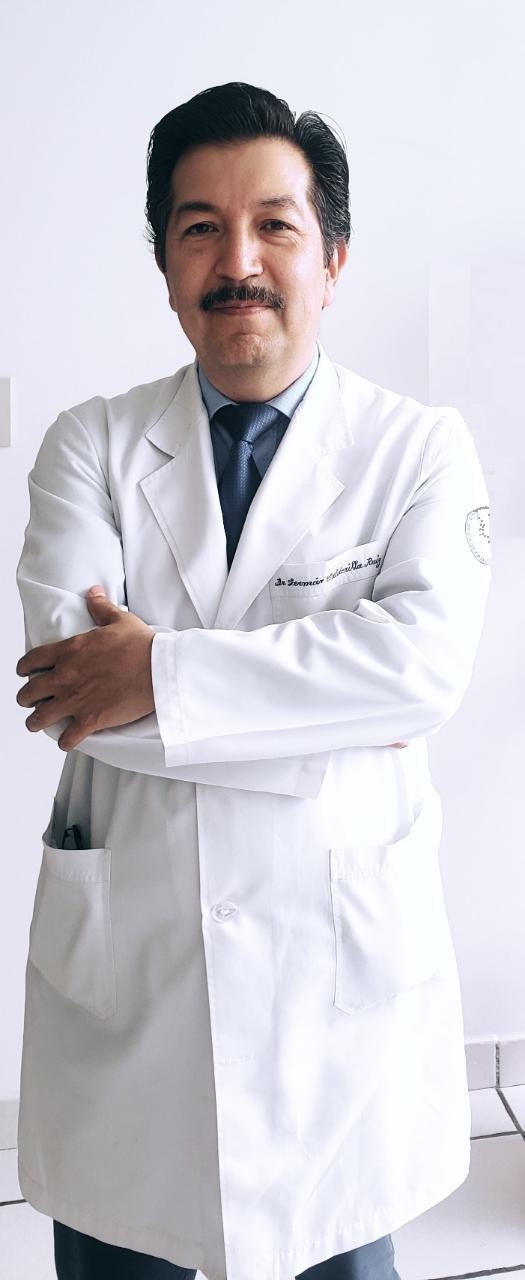ESMO World Congress on Gastrointestinal Cancer 2019, Barcelona, Spain, July 3-6

Credit: @European Society for Medical Oncology
Barcelona, Spain, 2 July 2019 – Stomach cancer should no longer be considered a disease only of older people, and patients under 40 with chronic digestive symptoms should be more actively investigated – especially if they are of Latin American ethnicity. This advice follows new data from a retrospective, observational study in Mexico which showed that one in seven of over 2,000 patients diagnosed with gastric cancer between 2004 and 2016 were under 40. These findings, reported at the ESMO World Congress on Gastrointestinal Cancer 2019, (1,2) support US National Cancer Institute data showing that gastric cancer is affecting more young Hispanic people, with worse outcomes than in older patients.
“At our centre, we have seen a 120% increase in gastric cancer in younger patients in the last 12 years and this increase has been mainly in female patients who typically present with more advanced disease and worse prognostic indicators than men, with an adverse impact on survival,” said study author Dr German Calderillo-Ruiz, from the National Cancer Institute, Tlalpan, Mexico.
In the Mexican study, over half of patients under 40 with gastric cancer were women, in contrast to previous research which has typically shown that gastric cancer is most common in men. Female patients in Mexico were more likely to have diffuse-type and poorly differentiated tumours and later stage disease at diagnosis than male patients, with a significantly lower overall survival.
“The lack of financial resources may impact on women’s behaviour of delaying pursuit of medical care when gastric symptoms appear. We hope this research will encourage clinicians and patients to be more aware of the risk of gastric cancer in younger people and, in particular, to encourage women with gastric symptoms to seek medical help sooner,” said Calderillo-Ruiz.
Commenting on the implications of the research, Dr Rodrigo Dienstmann, from Vall d’Hebron Institute of Oncology, Barcelona, Spain, highlighted the combination of genetic and environmental factors that contribute to gastric cancer and the fact that young people with gastric cancer have more aggressive disease which is less responsive to curative treatment.
“We cannot change the genetic factors but we can act on the unhealthy diet, obesity, and untreated Helicobacter pylori infection which increase the risk of gastric cancer. Helicobacter infection can cause chronic inflammation and lesions that are precursors to gastric cancer but, once diagnosed, can be cured with a combination of antibiotics and drugs to reduce stomach acid,” said Dienstmann.
“Younger people who regularly experience indigestion, heartburn or other gastric symptoms should not ignore them but should go to their doctor as they probably need diagnostic tests. In addition, clinicians should not ignore the possibility of gastric cancer in young population, particularly in Latin America or among Hispanics in North America.” concluded Dienstmann.
Following the latest research in Mexico, epidemiological and molecular studies are being conducted in Latin America and Europe to investigate the different molecular subtypes of gastric cancer in the regions and improve our understanding of risk factors in these populations. (3)
Study results
In the Mexican study, data from 2,022 patients with gastric adenocarcinoma diagnosed between 2004 and 2016 were analysed, of whom 290 patients (14%) were under 40. Of these, 54% were women and 46% were men. Women had higher levels of factors indicating poor prognosis than men: diffuse-type tumour (68% vs 32%; P=0.127), ring-seal cells (76% vs 69%; P=0.049), poorly-differentiated (89% vs 84%; P=0.014) and higher prevalence of stage IV disease (59% vs 41%; P=0.011).
Overall survival was a median of 7 versus 8 months for women and men respectively (P=0.03; hazard ratio (HR) 1.29; 95% CI, 1.05-1.65). Median overall survival was significantly worse in patients with tumours at the oesophagogastric junction: 7 vs 14 months (P=0.23; HR 0.68; 95% CI, 1.05-2.688) and more advanced disease: clinical-stages I-III, locally advanced and stage IV 33, 12, and 5 months, respectively (P=0.001; HR=2.28; 95% CI, 1.72-3.01). Independent predictors of overall survival were maintained in a Cox-Regression analysis: gender (P=0.038, HR 1.29, 95% CI 1.01-1.65), primary tumor (P=0.02, HR 1.68, 95% CI 1.05-2.68) and clinical-stage (P=0.001, HR 2.28, 95% CI 1.72-3.01).
###
Notes to Editors
Please make sure to use the official name of the meeting in your reports: ESMO World Congress on Gastrointestinal Cancer 2019
Official Congress Hashtag: #WorldGI2019
Disclaimer
This press release contains information provided by the author of the highlighted abstract and reflects the content of those abstracts. It does not necessarily reflect the views or opinions of ESMO who cannot be held responsible for the accuracy of the data. Commentators quoted in the press release are required to comply with the ESMO Declaration of Interests policy and the ESMO Code of Conduct.
References
1 https:/
2 Abstract – P-145 ‘Gastric cancer in young Latin women: bad prognostic factors and outcomes’ will be presented by German Calderillo-Ruiz during the Poster Session on 4 July, 11:10-11:30 CEST. Annals of Oncology 30 (Supplement 4): iv137-iv151, 2019
3 Projects such as the Legacy project financed by European Commission Horizon 2020 grants (https:/
About the ESMO World Congress on Gastrointestinal Cancer
The ESMO World Congress on Gastrointestinal Cancer represents the year’s most important gathering designed to focus on reversing the current global statistics that rank gastrointestinal malignancies as the leading causes of cancer deaths worldwide.
Abstract P-145 – Gastric cancer in young Latin women: bad prognostic factors and outcomes
G Calderillo-Ruiz1, A Takahashi2, M Herrera3, A Padilla4, E Trejo3, M Ramos-Ramirez5, B Carbajal3, A Albarran3
1National Cancer Institute, Tlalpan , Mexico, 2National Cancer Institute, Mexico, Mexico, 3National Cancer Institute, Tlalpan, Mexico, 4National Cancer Institute, Tlalpan, Mexico, 5National Cancer Institute, Mexico City, Mexico
Introduction: Gastric cancer (GC) has been considered a disease of the older population worldwide. In the last decade, GC has increased in the younger population (less than or equal to 40 years) up to 15%, with a higher incidence in women. These patients remain asymptomatic with late diagnosis and poor prognostic factors such as type and histological grade. The aim of this study was to describe the prevalence and prognostic factors, and their relationships with overall survival (OS) in Latin patients with gastric adenocarcinoma less than or equal to 40 years treated at INCAN, Mexico.
Methods: This was a retrospective, observational study, from 2004 to 2016. Measures of central tendency, Kaplan-Meier, log-rank, and Cox regression model were used for the calculation of OS and factor analysis between the groups with P<.05 bilateral statistical significance.>
Results: We analyzed 2022 patients with gastric adenocarcinoma, of whom 14% (n=290) were patients less than or equal to 40 years. Of these, 54% were women and 46% were men, with a mean age of 34.6 years (CI 4,9) in both groups. A 120% increase in young patients with GC has been documented in the last 12 years. The locations of the primary tumors were gastric (93%) and the esophagogastric junction (UEG) (7%). Histological data were as follows: diffuse-type (70%), cells-ring-seal (72%), and poor-differentiated (87%). They were classified as the following: Clinical-stage I-III (8%) by total or partial gastrectomy; locally advanced (LA) (16%); and Clinical-stage IV (76%) by tomography and/or laparoscopy.
All patients received the conventional oncological treatment+/-support treatment approved by the institutional management guidelines. Comparatively, women showed higher poor prognostic factors: diffuse-type (68%; P=0.127), ring-seal cells (76%; P=0 .049), poor-differentiated (89%; P=0 .014) and higher prevalence of EC-IV (59%; P=0 .011) compared to 32%, 69%, 84%, and 41% for men respectively. In OS analysis, a median of 7 versus 8 months was observed for women and men (P=0.030;HR 1.29; 95% CI, 1.05-1.65). Regarding primary tumor, median-OS for gastric tumors was 7 months versus 14 months for UEG (P=0.23; HR 0.68; 95% CI, 1.05-2.688). In addition, significant differences were observed in median-OS between Clinical-Stages I-III, LA and IV with 33, 12, and 5 months, respectively (P=0 .001; HR1/42.28; 95% CI, 1.72- 3.01). In the Cox-Regression analysis, independent predictors of OS were maintained in Gender (p=0.038, HR 1.29, 95% CI 1.01-1.65) , Primary tumor (p=0.020, HR 1.68, 95% CI 1.05-2.68) and Clinical-stage (p=0.001, HR 2.28, 95% CI 1.72-3.01), diffuse-type, ring-seal-cells and little-differentiation show no statistical significance.
Conclusion: The incidence of GC in the younger population has been increasing over the last 12 years, with a greater incidence in females, contrary to what is seen in patients over 40 years. Poor prognosis factors such as clinical-stage IV, diffuse-type adenocarcinoma, presence of ring-seal cells, and poor-differentiation are more frequent in young women, showing a decrease in OS.
Media Contact
ESMO Press Office
[email protected]
Original Source
http://esmo.
Related Journal Article
http://dx.




